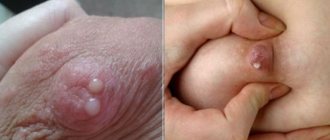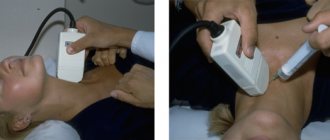Fractures of the bones of the hand are injuries in which the integrity of the bones of the wrist, metacarpus or phalanges of the fingers is disrupted. These are common injuries, accounting for about a third of all bone fractures. This trend is associated both with the relative fragility of the hand, adapted for performing fine manipulations, and with its high activity. A fracture can occur as a result of a fall on a bent hand, a blow from a fist, the edge of the palm or fingers, or a direct blow to the hand.
The bone apparatus of the hand consists of 27 bones of three sections - the wrist, metacarpus and fingers. The wrist consists of 8 spongy bones arranged in two rows - proximal, closer to the forearm, and distal, closer to the metacarpus. The first, proximal row, starting from the thumb, are the scaphoid, lunate and triquetral bones, which form an articulation with the radius bone of the forearm - the wrist joint. The fourth bone of the proximal row, the pisiform, does not participate in the formation of the wrist joint.
The second, distal row - the polygonal, trapezoid, capitate and hamate bones - connect to the five tubular bones of the metacarpus, radiating from the wrist. The distal ends of the metacarpal bones form five metacarpophalangeal joints - the connections of the metacarpus with the fingers. The first finger of the hand consists of two phalanges, the rest - of three. The phalanges of the fingers - short tubular bones - are connected to each other by interphalangeal joints.
The bones most susceptible to fractures are the phalanges and metacarpal bones. Wrist bones are broken quite rarely. The vast majority of injuries to the bones of the wrist occur as a result of a fracture of the scaphoid bone; the lunate and pisiform bones are less commonly affected. Fractures of the hamate and distal carpal bones are practically never encountered in clinical practice.
Fractures of the bones of the hand are accompanied by sharp pain and swelling in the area of damage; when bone fragments are displaced, deformation of the hand is possible. A hematoma may appear at the site of swelling. With some fractures, you can feel the displaced bone fragments under the skin or hear their crepitus. The diagnosis can be established by a traumatologist, who will clarify the complaints, ask in detail about the mechanism of injury, examine and palpate the fracture area, and check the preservation of movements in the joints. The diagnosis is confirmed by an X-ray examination of the hand, which can visualize the fracture line, assess the degree of displacement of fragments and, as a result, determine treatment tactics.
Treatment of hand fractures includes mandatory immobilization with a plaster cast for a period of 3 to 8 weeks. In case of displacement of fragments, closed reduction is performed; if it is ineffective, skeletal traction or osteosynthesis is performed. Careful comparison of fragments and consolidation of the fracture are important to preserve not only the aesthetics of the hand, but also its full function.
Classification of hand bone fractures
Depending on the presence or absence of skin damage over the fracture, the following are distinguished:
- closed fractures - the integrity of the skin is not compromised;
- open fractures - in the area of damage there is a wound in which bone fragments can be identified.
According to the position of bone fragments:
- without displacement - the broken bone maintains its position, the fragments exactly touch along the fracture line;
- with displacement - bone fragments diverge to the sides and, as a result, cannot heal along the fracture line without their comparison - reposition.
According to the involvement of articular structures in the fracture:
- extra-articular fractures - the fracture line passes outside the joint cavity;
- intra-articular fractures - the fracture line is located inside the joint cavity;
- fracture-dislocations - a violation of the integrity of the bone in combination with a dislocation in the adjacent joint.
According to the location of the fracture:
- wrist bone fractures;
- metacarpal bone fractures;
- fractures of the phalanges of the fingers.
You can also classify hand fractures depending on the number of fragments, degree of displacement, and infection. The etiology of the fracture is also important - whether it was traumatic or pathological - arising against the background of bone disease. All these factors influence the choice of treatment tactics for fractures and, ultimately, the possibility of completely restoring the function of the damaged hand.
Grade
The assessment includes:
- Standard radiographs of the hand (antero-posterior, lateral and oblique). In the vast majority of cases, this will be enough to confirm the diagnosis and formulate a treatment plan. Confirmation of more subtle lesions can be obtained using specialist views such as Brewerton (metacarpal heads), Roberts and Betts (thumb).
- A CT scan is sometimes necessary for base metacarpal fractures to rule out/confirm the presence of intra-articular displacement and determine whether surgery is necessary.
Wrist fractures
The bones of the wrist, due to their shape, structure and position, are broken quite rarely. The most susceptible bone to fracture is the scaphoid, the large bone at the base of the big toe. Injuries to the lunate and pisiform bones of the wrist also occur. The triquetral bone, as well as the bones of the distal row - polygonal, trapezoid, capitate and hamate - are subject to fractures extremely rarely; usually their fractures are combined with dislocations in the corresponding joints.
Scaphoid fractures
The cause is a fall on a bent hand, a blow with a fist, or a direct injury to the wrist. The following options are possible:
- intra-articular fracture of the scaphoid - the fracture line is located inside the cavity of the wrist joint;
- extra-articular fracture - separation of the tubercle of the scaphoid;
- de Quervain's fracture-dislocation - a simultaneous fracture of the scaphoid and dislocation of its proximal fragment and the lunate from the wrist joint.
Symptoms are pain and swelling at the base of the thumb, inability to move the hand at the wrist joint, or clench the hand into a fist. The diagnosis is established based on the patient’s complaints, data on the nature of the injury, examination and radiography of the hand bones. Sometimes, in the absence of displacement of fragments, the fracture line with all its signs is not determined. In this case, immobilization is still carried out with repeated radiography after 7-10 days, when, due to the activation of regenerative processes, the fracture line becomes clearly visible.
Treatment is immobilization with a plaster cast for a period of 4 weeks, followed by monitoring and prolongation of immobilization in case of insufficient consolidation of the fracture. In case of displacement of fragments and fracture dislocation, closed reduction is ineffective; fixation of fragments of the scaphoid bone with a wire is indicated. Fractures of the scaphoid are often complicated by the development of a false joint or lysis of bone fragments due to damage to the blood vessels supplying them during injury. Therefore, it is important to follow all the doctor’s recommendations and take control photographs in a timely manner to avoid complications and deterioration in the function of the wrist joint. After restoring the integrity of the scaphoid bone, physiotherapeutic treatment and exercise therapy are indicated to restore hand function.
Lunate fractures
The cause is a fall on a bent hand or direct injury, a blow to the wrist. It manifests itself as pain and swelling, intensifying with movements in the third, fourth and fifth fingers and with extension of the hand. The diagnosis is established taking into account complaints, the mechanism of injury, an objective examination of the area of damage and the results of an x-ray examination. To treat a lunate fracture, a plaster cast is applied for 4-8 weeks. Recovery usually proceeds without complications.
Fractures of the pisiform bone
The cause is a blow with the edge of the palm or direct injury. It manifests itself as pain and swelling of the wrist on the little finger side, increasing pain when it moves. The diagnosis is made taking into account complaints, anamnesis of injury, examination of the area of damage and radiography of the bones of the hand. For complete consolidation of a fracture of the pisiform bone, 4-5 weeks of immobilization are sufficient. The injury is rarely complicated.
What are the possible treatment options for brachymetacarpy and how does it work?
To lengthen the bones of the hand, there are three main options for operations: one-stage bone grafting, two-stage bone grafting and distraction osteosynthesis according to G.A. Ilizarov. The method of choice in the treatment of brachymetacarpy is the third option - distraction osteosynthesis or lengthening with a distraction device according to the method of G.A. Ilizarov. With brachymetacarpy, the shortening of the metacarpal bone always exceeds 1 cm, and one-stage bone grafting does not eliminate the shortening of the metacarpal bone by more than 1 cm at a time, so the choice of this technique for the treatment of brachymetacarpy is not the most competent decision. Two-stage bone grafting can be used to treat this pathology, however, lacking the advantages of one-stage bone grafting (only one operation and a relatively short recovery period), it has the same disadvantage - the need for bone grafting from another area. Lengthening with a distraction device allows one to avoid significant postoperative scars and does not require trauma to the donor area, despite the rather long period of wearing the device (about 3 months), and therefore this technique is the operation of choice for brachymetacarpy.
Metacarpal fractures
The long, thin metacarpal bones are often broken by a punch or direct trauma. Muscle traction and movements in the hand until the fracture is immobilized often lead to displacement of bone fragments. There are epiphyseal fractures, when the fracture line is localized in the area of the bone heads, and diaphyseal fractures, when the fracture line is located in the bone body.
First metacarpal fracture
The cause is a blow with a bent first finger, less often a direct blow to the first metacarpal bone.
Fracture of the base of the first metacarpal bone . A typical injury for boxers and MMA fighters. A Bennett fracture is a separation of the base of the first metacarpal bone, which is held by ligaments, with simultaneous dislocation of most of it in the carpometacarpal joint. Rolando's fracture is a comminuted fracture-dislocation of the first metacarpal bone. Both injuries present with pain, deformation and swelling in the “anatomical snuffbox” area - the area under the base of the first finger - with increased pain when moving or trying to make a fist. Diagnosis is carried out taking into account complaints, trauma history, examination of the area of injury and x-ray of the hand. Bennett and Rolando fractures are treated surgically using osteosynthesis - restoring bone integrity by fixing fragments with metal knitting needles, pins or plates.
Fracture of the middle part of the first metacarpal bone . More often it occurs due to a direct blow to the bone. It manifests itself as pain, swelling and deformation in the area of the first metacarpal bone. The diagnosis is established taking into account the patient's complaints, information about the mechanism of injury, examination of the area of the first metacarpal bone and x-ray examination of the bones of the hand. Treatment is plaster immobilization for a period of 4-5 weeks; if the fragments are displaced, preliminary closed reposition is required. If conservative reduction is ineffective, an operation - pin osteosynthesis - is performed to compare the fragments.
An example of Dr. Valeev’s operation to restore after a fracture of the first metacarpal bone:
Before surgery:
After operation:
Fracture of II, III, IV, V metacarpal bones
The cause is a blow with a fist or a fall on fingers clenched into a fist. They can be single, but more often several metacarpal bones are broken, usually the fourth and fifth. It manifests itself as pain, swelling and deformation of the hand, and a hematoma often occurs. Diagnosed on the basis of complaints, history of injury, objective examination and X-ray results of the bones of the hand. To treat a non-displaced fracture, immobilization is performed for a period of 4-5 weeks. If fragments are displaced, closed reduction is indicated, and if it is ineffective, skeletal traction or pin osteosynthesis is indicated.
Clinically Relevant Anatomy
Hand bones
The metacarpal bones are long, thin bones that are located between the wrist bones and the phalanges of the fingers.
- Each bone consists of a base, body and head.
- The proximal bases of the metacarpal bones articulate with the carpal bones.
- The distal heads of the metacarpal bones articulate with the proximal phalanges and form the knuckles.
- The 1st metacarpal bone is the thickest and shortest of these bones.
- The 3rd metacarpal bone is distinguished by a styloid process on the lateral side at its base.
- Soft tissues commonly injured in fractures include cartilage, joint capsule, ligaments, and fascia.
- In severe polytrauma, tendons and nerves adjacent to the fracture may also be damaged.
Fracture of the phalanges of the fingers
The cause is a blow with the fingers, an injury while fixing the fingers, or a direct blow to the phalanges. Fractures of the phalanges of the fingers can be:
- intra-articular;
- extra-articular;
- single;
- multiple - within one finger or several;
- combined with dislocations in the metacarpophalangeal or interphalangeal joints.
Symptoms: pain, swelling, hematoma, deformity. The pain intensifies when you try to move your fingers. The diagnosis is established on the basis of complaints, trauma history, objective examination and X-ray results. To treat a fracture of the phalanges of the fingers without displacement, fixation is performed with a plaster cast for 3-4 weeks. In case of fracture-dislocations, joint reduction is performed; in case of displacement of fragments, closed reduction is performed. If it is not possible to compare the fragments using a closed method, skeletal traction or pin osteosynthesis is indicated.
Physical therapy
The goal of rehabilitation is to restore strength and full range of motion.
- For this purpose, hand exercises with light resistance are prescribed. This is where resistance bands and a ball can be helpful, especially if there is scarring and limited flexor motion develops.
- Soft tissue repair can be more challenging (compared to bone repair).
- Rest and elevation are important, as is splinting (poor splinting can lead to stiffness, pressure sores, or even compartment syndrome).
Friends, on July 17 in Moscow, as part of the #RehabTeam project, Anna Ovsyannikova’s seminar “Rehabilitation of the hand after a fracture of the distal radius (fracture of the “radius in a typical place”)” will take place.” Find out more... In addition, on July 18, she will conduct a seminar “Rehabilitation of the hand after fractures of the metacarpal bones (Boxer fracture).” Find out more...
Physical therapists use a range of techniques to restore movement in the hand, wrist and fingers. These include:
- Eliminate swelling with massage and compression clothing.
- Soft tissue massage helps relieve muscle tension and pain.
- Developing a home exercise program for patients with specific recommendations for movement and strengthening exercises.
Here are the steps to follow for a stable fracture (you can use this or another of the stabilization methods below):
- A non-operative treatment involves strapping the injured finger to another finger. This can be done with or without a splint.
- Splinting for a fracture should be as follows: wrist extension 20 degrees; flexion of the metacarpophalangeal joint by 60-70 degrees and extension of the interphalangeal joint.
- If we are dealing with a stable fracture, it makes sense to start movements earlier.
- As a rule, active exercises to increase the range of motion without resistance can begin 2-3 weeks after surgical treatment (on intact or adjacent joints).
- Active movement. If the fracture is fixed, an active increase in range of motion may begin earlier. Most fractures are treated with immobilization, but active motion can begin after three weeks of therapy, starting with joints not affected during the initial immobilization. This phase usually lasts 3-6 weeks.
- Active movements involve sliding of tendons.
- Tendon gliding is important to prevent adhesions, increase circulation, and reduce swelling and compression at the fracture site.
Tendon gliding exercises
Exercises for tendon gliding
- The claw hand exercise can be used to improve the glide of the extensor digitorum tendon over the metacarpal bones.
- An exercise to block the deep flexor digitorum to improve the sliding of its tendon along the phalanges.
- A hook fist position that promotes selective gliding of the flexor digitorum profundus tendon.
- An exercise to block the superficial flexor digitorum to improve the sliding of its tendons along the middle phalanges.
- A straight fist position that promotes selective gliding of the superficial digital flexor tendons.
Passive movements
- Passive movements can be started after sufficient clinical healing after approximately 5-6 weeks of therapy.
- The timing of the onset of joint mobilization depends on the structures involved in the injury. If structures resisting force are not involved in the injury, joint mobilization can be initiated at the same time as active movement. Compression from a fracture can result in shortening, angulation, or rotation of the bone.
- Traditional passive range of motion exercises are designed to help joint cartilage heal and reduce swelling and stiffness.
- Resistive movement. Four weeks after injury, light resistance can be performed (this is true for most PKCs that are treated with immobilization). Active movements should only be continued if healing has not yet begun.
- Resistance exercises should also be postponed while the fracture is being fixed with pins (until the pins are removed). Light resistance exercises help in scar remodeling and improve movement. There are several types of resistance exercises, such as weight training. This type of exercise strengthens the superficial and deep flexors of the fingers.
- Functional exercises and work simulations should be incorporated into resistance exercises as soon as possible.
Bruises of the hand
Classic contusion of the soft tissues of the hand occurs very often in the practice of traumatologists. It is accompanied by redness of the tissue, moderate pain and swelling, and a local increase in temperature. and no serious treatment is required in this case. Specialists limit themselves to local anesthetics that help quickly relieve swelling and relieve pain.
If, in addition to a bruise, a violation of tissue integrity is detected, it is necessary to use antiseptics, and, if necessary, antibacterial agents. This will prevent the spread of infection. In some cases, it is necessary to immobilize the limb until the diagnosis is clarified.
The quality of primary antiseptic treatment directly affects the purity of infectious complications. Many patients do not pay attention to the need to disinfect the injury site before meeting with a traumatologist. After treatment with an antiseptic and applying a bandage, it is recommended to apply dry cold to reduce the risk of bleeding and the formation of a large hematoma.
Treatment of hand injuries
Treatment tactics for hand injuries are selected individually, depending on the degree of damage. Closed soft tissue injuries are treated on an outpatient basis using special tight bandages that help with sprains and joint damage. Additionally, it is recommended to use warm compresses, but their use is prohibited in the first three days after injury (due to the risk of infection and bleeding).
To reduce pain, local agents with anti-inflammatory and antiseptic properties are used. Cold is applied for 2-3 days, and then heat compresses with medical alcohol can be used. It is allowed to apply warming ointments to injured tissues to quickly resolve bruises and reduce pain.
If joints and bones are damaged, immobilizing and plaster bandages are used for a period of two weeks. Physiotherapeutic treatment, which includes various procedures: UHF, electrophoresis using a 10% calcium chloride solution or 0.5% novocaine, diadynamic currents, has a good therapeutic effect for hand injuries.
Patients with injuries to the soft and hard tissues of the hand need to be examined by a qualified specialist. As a rule, it is enough to follow the general recommendations of a traumatologist in order to quickly recover. It is necessary to limit physical activity for the first 2 weeks and protect the injured hand from negative influences from the outside. The patient is prescribed cold, rest and elevated position of the limb. Often, for injuries, compression is used with elastic bandages, elastic bandages or splints. The first day the arm should be in an elevated position to ensure effective lymph circulation and prevent the occurrence of edema.
If using a plaster cast, it is necessary to inspect the skin around the cast daily in order to promptly detect areas of inflammation or discoloration of the tissue. If you notice bluishness of the skin, you should seek medical help to restore normal blood supply to the tissues. If areas of tissue with signs of an inflammatory reaction are detected, it is recommended to use special lotions with anti-inflammatory and moisturizing effects.
Patients who suspect that they have a dislocated hand should urgently consult a traumatologist. The doctor will realign the hand after high-quality anesthesia, and then fix the joint from the elbow to the base of the fingers with a plaster splint. If, even after reduction, the doctor determines that the joint is unstable, additional fixation with Kirschner wires will have to be used. If the median nerve is compressed, surgery is required.
Rehabilitation after hand injuries
Rehabilitation is a mandatory stage in the treatment of hand injuries. Rehabilitation measures may include physiotherapeutic techniques, massage, spa therapy, physical therapy, warming compresses, and the use of medicinal ointments. The patient’s motor activity and quality of life in the future depend on the effectiveness of rehabilitation. It is forbidden to subject the hand to increased physical stress in the first months after the end of treatment.
In our Clinic in Yaroslavl you will receive the necessary assistance with hand injuries of any complexity. We are ready to answer all your questions and provide high-quality information support.
If you have any questions or make an appointment with a specialist, please call: (4852) 37-00-85 Daily from 8:00 to 20:00
Sign up for a consultation
First aid for bruises and other injuries to the hand
Immediately after the injury, the patient must make sure that he received a minor bruise and that no bone remains are visible at the site of the injury. The wound is washed with warm water and soap, gently dried and treated with antiseptic. Then you need to apply dry ice for 5-10 minutes. After this time, the hand must be examined again, finger activity and range of motion checked.
In case of damage to the hand with a violation of the integrity of the skin, it is necessary to apply a bandage of a sterile bandage. When applied correctly, the bandage completely covers the damaged tissue, does not hinder movement and does not cause any pain. Make sure that the bandage does not squeeze the skin. If the tissues begin to turn blue and sensitivity decreases, this indicates that the bandage urgently needs to be loosened or replaced.
Dry ice must be applied every hour for 5-10 minutes. Usually this is enough to reduce pain and prevent the appearance of a hematoma. Intermittent cold therapy is an effective treatment for minor bruises and injuries. More serious injuries require specialist consultation and a comprehensive examination.
The main tasks of first aid for hand injuries:
- immobilization of the limb to prevent the development of complications;
- stopping bleeding from a wound;
- antiseptic treatment for prophylactic purposes;
- reduction of swelling, pain, signs of an inflammatory reaction.
Patients are not always able to provide first aid for hand injuries, especially if the wound is bleeding and there is severe pain. If you cannot adequately assess the complexity of the situation and your condition, it is recommended to immediately contact medical professionals. They will carry out antiseptic treatment themselves, relieve pain and, if necessary, use immobilization.









